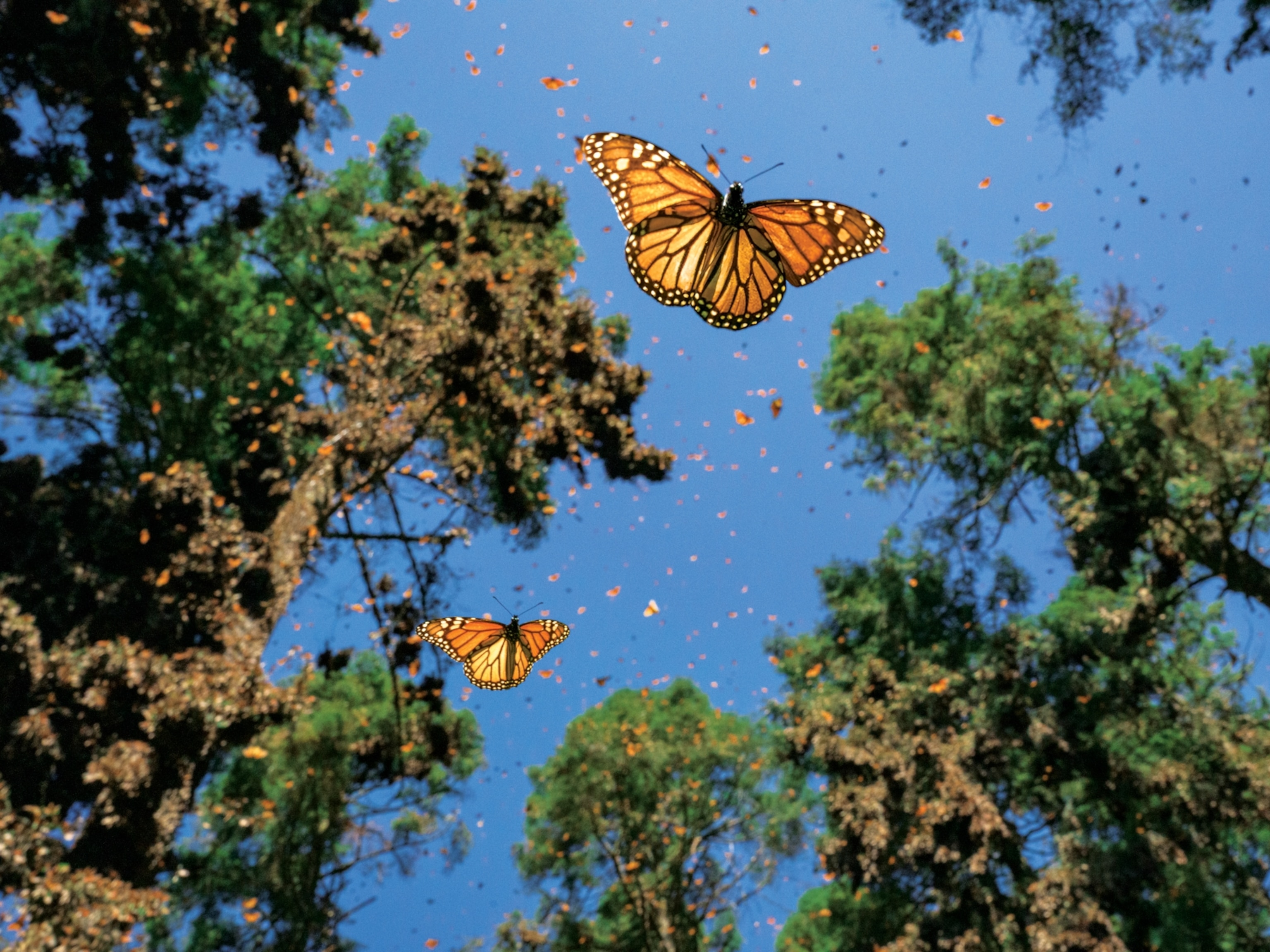
Fruits and Veggies Are Alive, Can Defend Against Herbivores
A new study finds that produce can be “trained” to specific circadian cycles, boosting their natural defenses against pests.
The next time you wander amongst the produce in your local market, think about this: Those fruits and veggies are still alive. Though they may not be able to jump up and move, new research shows that some vegetables and fruits exhibit circadian rhythms, and can adjust their defensive compounds and nutrients accordingly.
A study published online today in the journal Current Biology found that store-bought cabbage, lettuce, spinach, zucchini, sweet potatoes, carrots, and blueberries respond to light-dark cycles up to about a week after harvest.
And when the produce was kept on the same light-dark cycle as a predator—cabbage looper moth caterpillars (Trichoplusia ni)—it was better able to resist attacks.
Circadian clocks tell plants when the seasons change due to variations in day length, said Janet Braam, a plant biologist at Rice University in Houston, Texas. But the clock is also critical in plant defenses against insects.
"[Plants] know when the insects eat," said Braam, who is a co-author on the recent study, "so they can prepare a defense in advance."
Braam and colleagues knew that levels of protective compounds called glucosinolates were under the control of the circadian clock in a plant called Arabidopsis. Part of the mustard family, Arabidopsis is related to produce including cabbage, broccoli, and cauliflower.
So the researchers decided to see if they could catch similar results in food crops like cabbage.
Illuminating Results
Braam and colleagues took store-bought cabbage and cut one-inch (three-centimeter) circles from the leaves. They then "trained" their cabbage disks to a circadian rhythm by exposing the samples to 12 hours of light and 12 hours of dark for three days.
They measured levels of glucosinolate, including a compound called 4MSO that has anticancer and antimicrobial properties, at four-hour intervals. The team then exposed the disks to cabbage looper moth caterpillars that had also been trained to the 12-hour light, 12-hour dark cycle.
Cabbage disks on the same schedule as the looper moth caterpillars suffered the least amount of damage from the insect, while cabbage samples out of synch with the caterpillars' schedule—which experienced "daylight" hours during the caterpillars' "nighttime" hours—lost 20 times more tissue when exposed to the hungry herbivores.
Glucosinolates accumulated in the cabbage disks during daylight hours, when the caterpillars were feeding. Thus, cabbage on the same schedule as the caterpillars were able to marshal their defenses in time to defend against the herbivores.
But cabbage out of synch with the caterpillar schedule did not have the same levels of protection. "Basically the plant is preparing at the wrong time of day," explained Braam.
Encouraged by the results of their cabbage experiments, the researchers decided to test other fruits and vegetables to see if they would also respond to circadian clock training.
The team was able to get lettuce, spinach, zucchini, sweet potatoes, carrots, and blueberries on the same 12-hour light, 12-hour dark cycles. And although they don't have glucosinolates like cabbage, these fruits and vegetables exhibited similar resistance to cabbage looper moth caterpillar attacks.
Real World
Braam has plans to delve deeper into what other nutrients or compounds in fruits and vegetables are under the control of circadian clocks. She would also like to figure out how to take advantage of changes in compound levels that are beneficial to human health.
"This has some great potential to guide our thinking on how to manage pests better without such high-impact efforts as pesticide use," said Jerry Glover, an agricultural ecologist with the U.S. Agency for International Development who was not involved in the study.
Mike Covington, a plant biologist at the University of California, Davis who was not involved in the study, agreed.
"This is an approach that you can take to increase the post-harvest health of the crops without having to spray them with pesticides or introduce genetically modified organisms," he said.
The research team has looked into the evolutionary strategies plants use to fight pests and identified a potentially useful, and practical, way humans could protect crops, explained Glover, who works on global food security issues and post-harvest crop losses. (Related:"Plants vs. Insects: An Amazon Epic for the Ages.")
"The destruction of harvested crops due to pest damage can destroy some 30 percent of the food that's harvested," Glover said. "In sub-Saharan Africa, this is critical. If you could reduce that, we'd have much greater food security."





